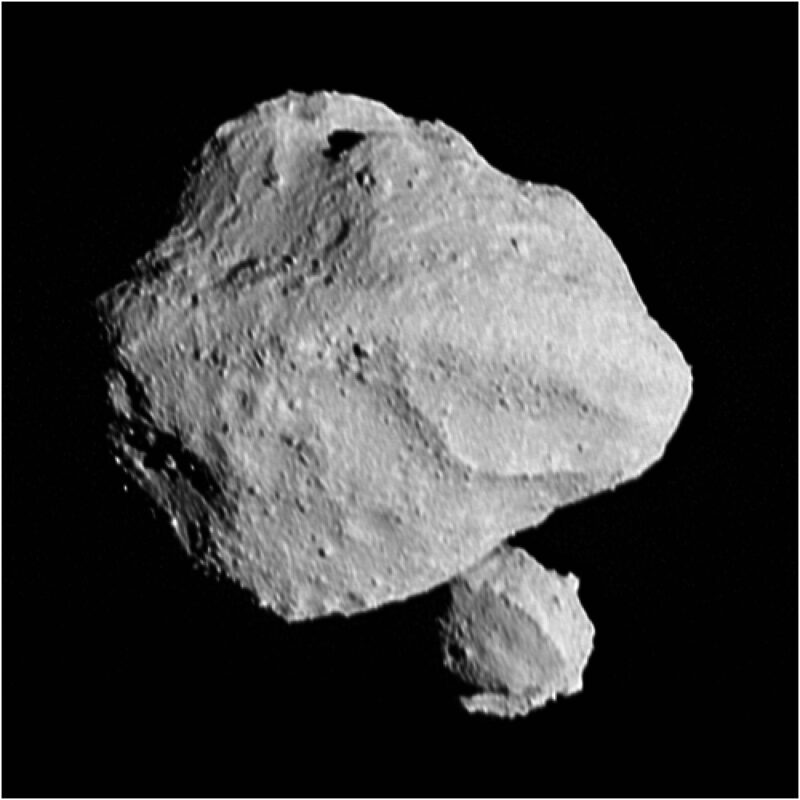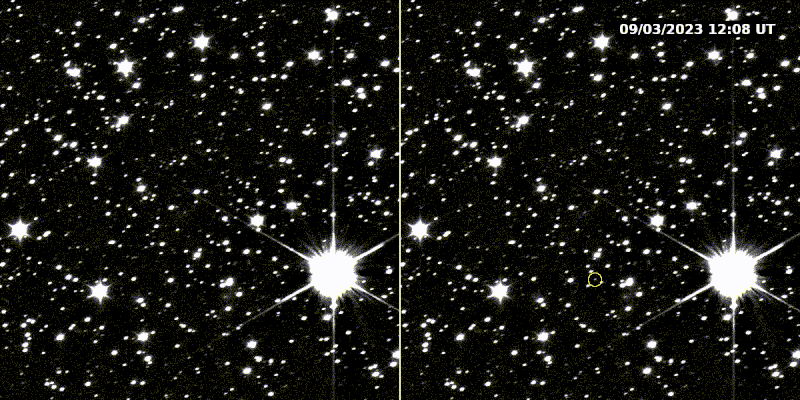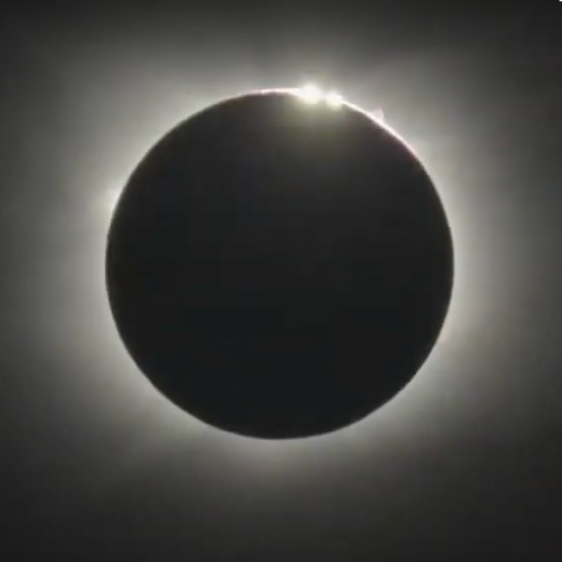[ad_1]

The Lucy spacecraft made a surprise discovery on November 1, 2023. While on the way for its mission to study the Trojan asteroids in Jupiter’s orbit, it made a test run past a main-belt asteroid. The plan was to test the spacecraft’s tracking system by imaging a little asteroid named Dinkinesh as it flew past it at 10,000 mph (16,000 km/h). But Dinkinesh had a surprise waiting. Lucy spied not one asteroid but two! As the spacecraft passed within 270 miles (430 km) of its target, it found that Dinkinesh is really two asteroids, with one larger and one smaller.
The name Dinkinesh means “marvelous” in Amharic. And Hal Levison, principal investigator for Lucy from the Southwest Research Institute said:
Dinkinesh really did live up to its name; this is marvelous. When Lucy was originally selected for flight, we planned to fly by seven asteroids. With the addition of Dinkinesh, two Trojan moons, and now this satellite, we’ve turned it up to 11.
Ajustando un poco la animación.#Dinkinesh #Lucy
NASA/Goddard/SwRI/ASU/j. Roger pic.twitter.com/mV1dx3q7Bf
— landru79 (@landru79) November 2, 2023
The 2024 lunar calendars are here! Best Christmas gifts in the universe! Check ’em out here.
An early look at Dinkinesh
Lucy got a glimpse of its target back in September. As the team continued to get images of Dinkinesh over the next couple of months, they suspected that it could be binary. The tip-off was that the asteroid’s brightness changed with time. That’s much like how astronomers have discovered some planets, by noting stars that change brightness as planets pass in front of them.
These new images of Dinkinesh show that the parent asteroid is about 0.5 mile (790 m) at its widest, while the moonlet is around 0.15 mile (220 m) in size.
This successful mini-mission makes Dinkinesh and its moon the smallest main-belt asteroids ever well-imaged by a spacecraft. Keith Noll, Lucy project scientist with NASA, said:
We knew this was going to be the smallest main belt asteroid ever seen up close. The fact that it is two makes it even more exciting. In some ways these asteroids look similar to the near-Earth asteroid binary Didymos and Dimorphos that DART saw, but there are some really interesting differences that we will be investigating.
And the test of the tracking system was a smashing success! As Tom Kennedy, guidance and navigation engineer at Lockheed Martin, said:
This is an awesome series of images. They indicate that the terminal tracking system worked as intended, even when the universe presented us with a more difficult target than we expected.
Where’s Lucy heading next?
What’s next for Lucy? In December 2024, the spacecraft will pass Earth for a second gravity assist. Then it will be off to the orbit of Jupiter where it will meet the Trojan asteroids. The Trojans are asteroids that have been captured by Jupiter’s strong gravity and that have presumably been traveling with Jupiter for billions of years in its orbit around the sun.

The path of the Lucy spacecraft to Dinkinesh
Dinkinesh was, in fact, not part of the original plan. Lucy’s original plan was to visit the main-belt asteroid (52246) Donaldjohanson in 2025, followed by a tour of nine Trojan asteroids starting in 2033. However, the team found a small, conveniently located asteroid that Lucy could visit between its first and second gravity assists from Earth. Raphael Marschall of the Nice Observatory in France identified Dinkinesh, which was estimated to be 0.4 miles (700 m) in size. Marschall said:
There are millions of asteroids in the main asteroid belt. I selected 500,000 asteroids with well-defined orbits to see if Lucy might be traveling close enough to get a good look at any of them, even from a distance. This asteroid really stood out. Lucy’s trajectory as originally designed will take it within 40,000 miles (64,000 km) of the asteroid, at least three times closer than the next closest asteroid.
So, with a slight change of plans and direction, the team brought Lucy even closer to the asteroid. Therefore, from the original distance of 40,000 miles, Lucy buzzed by only 270 miles (430 km) away.
Lucy’s journey
Lucy launched in October 2021. Later, a year after the spacecraft’s launch, Lucy made its first flyby of Earth. Then, on January 24, 2023, Lucy’s team added a new target to its mission: Dinkinesh. With a small maneuver, Lucy was able to get a close look at this asteroid two years ahead of its originally planned rendezvous with a main-belt asteroid.
Dinkinesh is, notably, the Ethiopian name for the human-ancestor fossil that we know of as Lucy, after which the Lucy mission is named. Dinkinesh means you are marvelous in Amharic, and was proposed by the Lucy mission team for the previously unnamed asteroid.

A tracking-system test for the Lucy spacecraft
The new target made a good test for the spacecraft’s inventive tracking system. In fact, engineers created the new system to solve a long-standing problem for flyby missions. Previously, it’s been difficult to determine just how far a spacecraft is from an asteroid. In addition, that makes it hard to know exactly where to point the cameras. Levison said:
In the past, most flyby missions have accounted for this uncertainty by taking a lot of images of the region where the asteroid might be, meaning low efficiency and lots of images of blank space. Lucy will be the first flyby mission to employ this innovative and complex system to automatically track the asteroid during the encounter. This novel system will allow the team to take many more images of the target.
The angle at which Lucy approached Dinkinesh relative to the sun is similar to what will happen during the Trojan asteroid encounters. As a result, the scientists got to practice under similar conditions years before the main event.
Bottom line: The Lucy spacecraft made a surprise discovery as it sped past the main-belt asteroid Dinkinesh on November 1, 2023, spying not one asteroid but two!
Via NASA
Via NASA
[ad_2]
Source link





No comments! Be the first commenter?